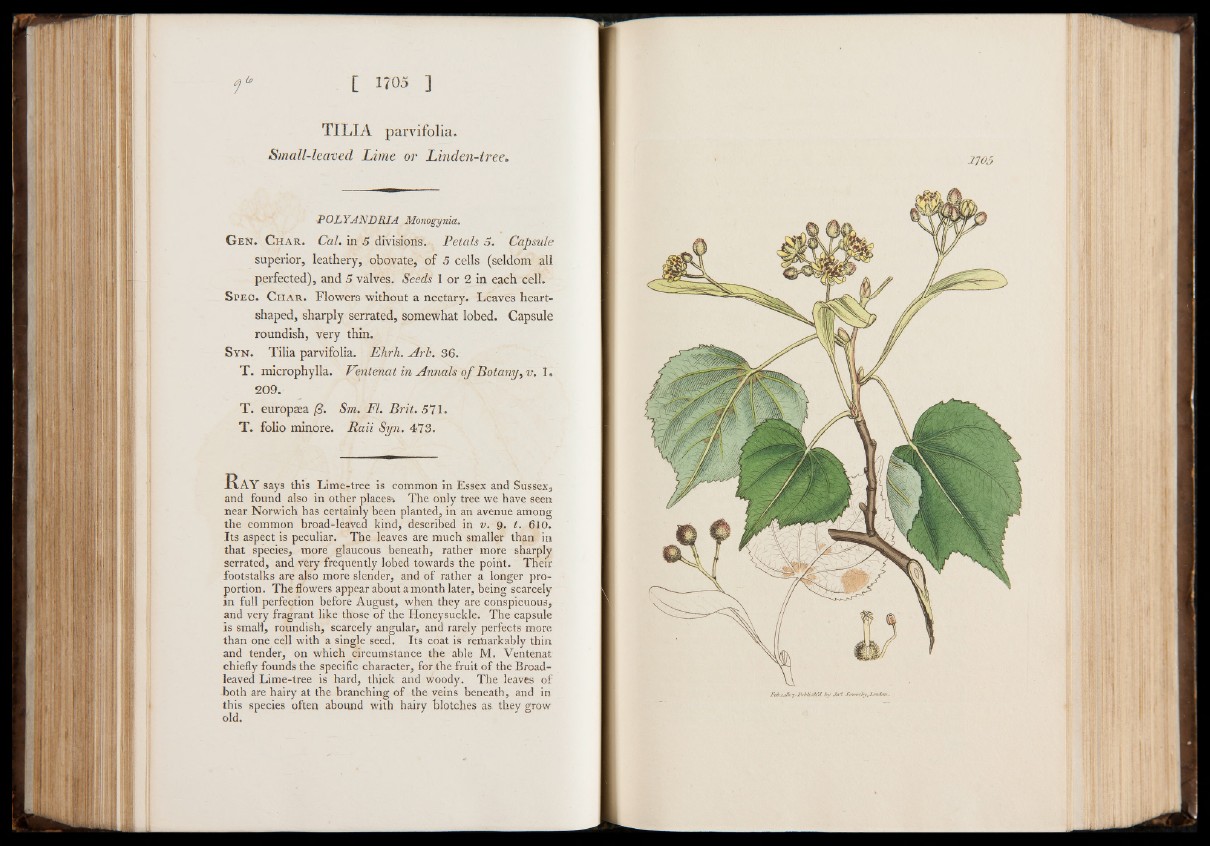
TILIA parvifolia.
Small-leaved, Lime or Linden-tree.
•POLYANDRIA Monogynict.
G en. Ch a r. Cal. in 5 divisions. Petals 5. Capsule
superior, leathery, obovate, of 5 cells (seldom all
perfected), and 5 valves. Seeds 1 or 2 in each cell.
Spec. Ch a r. Flowers without a nectary. Leaves heart-
shaped, sharply serrated, somewhat lobed. Capsule
roundish, very thin.
Syn. Tilia parvifolia. Ehrh. Arb. 36.
T . microphylla. Fentenat in Annals o f Botany, v. I .
209.
T. europæa [3. Sm. FI. Brit. 571.
T. folio minore. Raii Syn. 473.
R a y says this Lime-tree is common in Essex and Sussex,
and found also in other places» The only tree we have seen
near Norwich has certainly been planted, in an avenue among
the common broad-leaved kind, described in v. 9. t. 610.
Its aspect is peculiar. The leaves are much smaller than in
that species, more glaucous beneath, rather more sharply
serrated, and very frequently lobed towards the point. Their
footstalks are also more slender, and of rather a longer proportion.
The flowers appear about a month later, being scarcely
in full perfection before August, when they are conspicuous,
and very fragrant like those of the Honeysuckle. The capsule
is small, roundish, scarcely angular, and rarely perfects more
than one cell with a single seed. Its coat is remarkably thin
and tender, on which circumstance the able M. Ventenat
chiefly founds the specific character, for the fruit of the Broadleaved
Lime-tree is hard, thick and woody. The leaves of
both are hairy at the branching of the veins beneath, and in
this species often abound with hairy blotches as they grow
old.
Teba.iSo'j.Tubli.rJi'fl by Ja f Soiverby,XoiiAon.